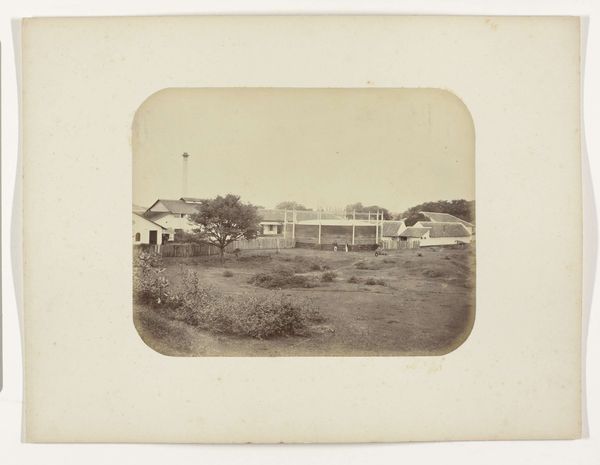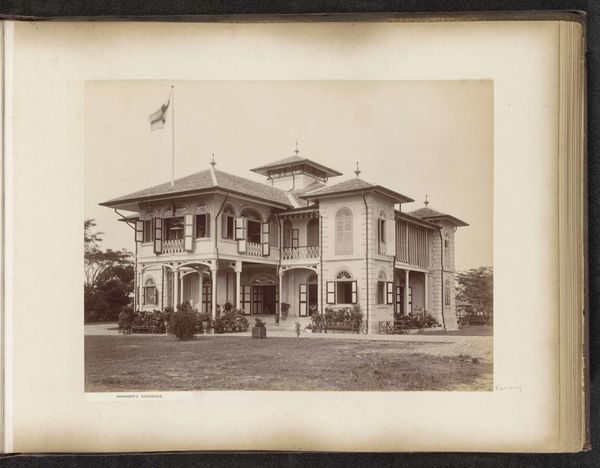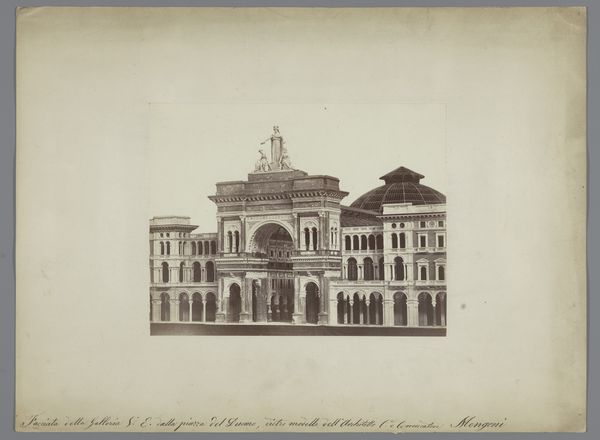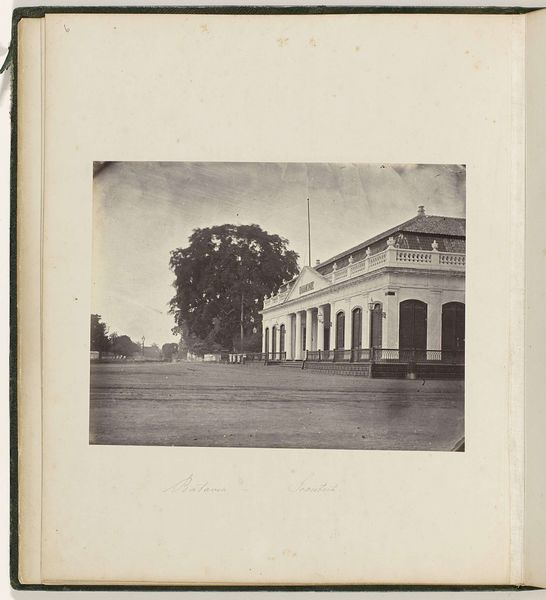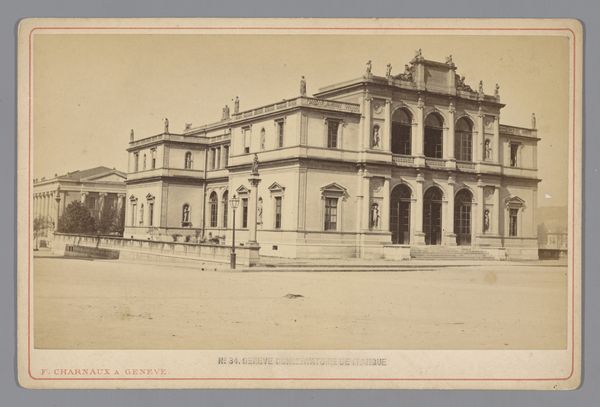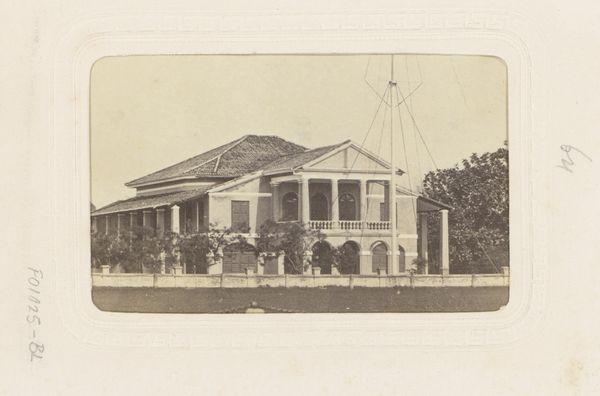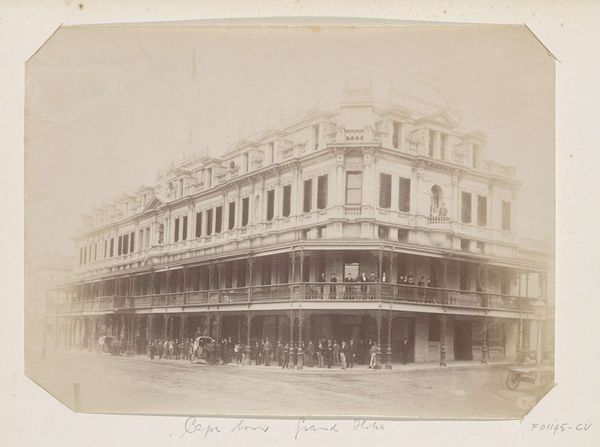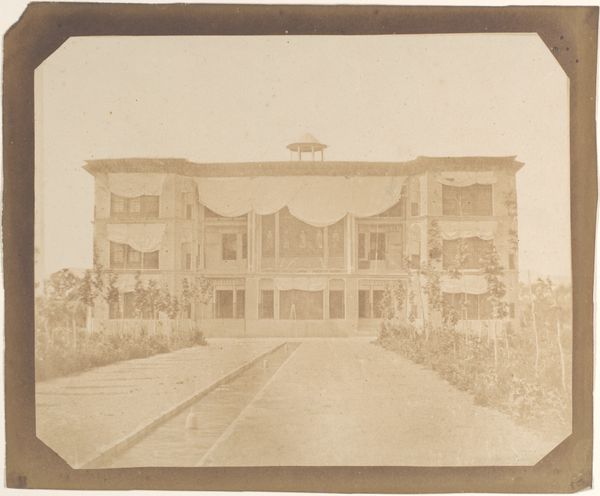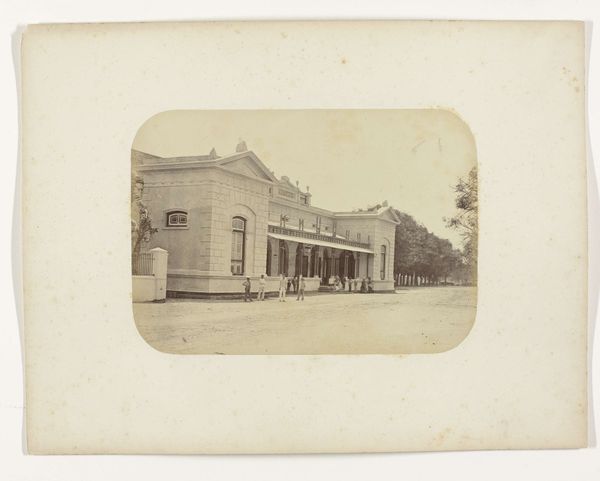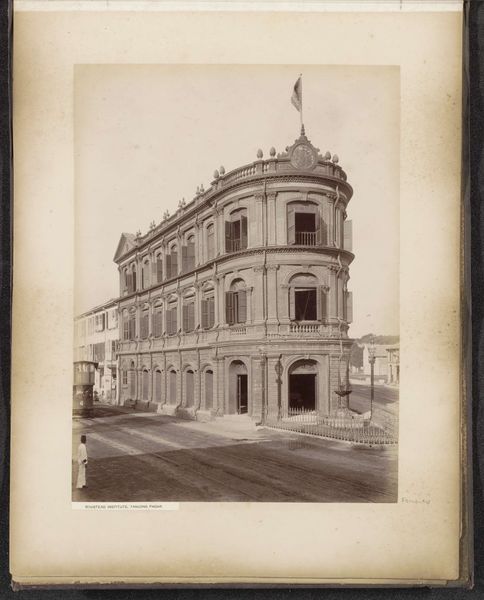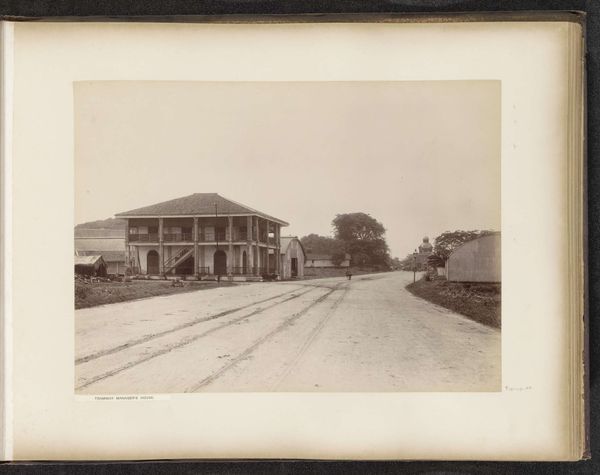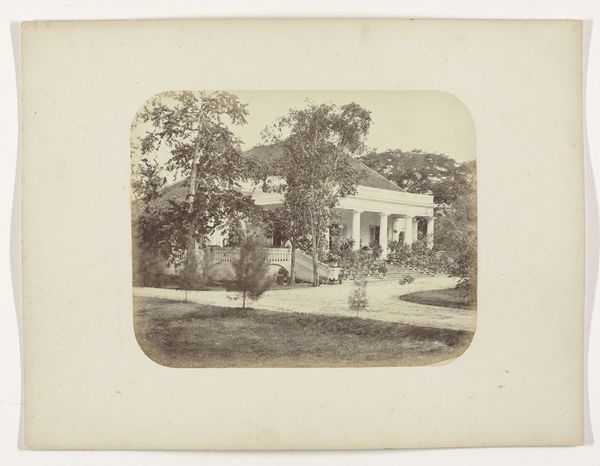
photography
#
aged paper
#
toned paper
#
landscape
#
photography
#
cityscape
Dimensions: height 21.8 cm, width 27.8 cm
Copyright: Rijks Museum: Open Domain
Curator: Let’s discuss "Het handelsbureau aan de Kali Mas," a photograph taken by Herman Salzwedel between 1876 and 1884, now residing here at the Rijksmuseum. Editor: It has this strikingly formal quality, doesn't it? Staged, even. The building's symmetry is only softened slightly by the visible aging of the print. It projects a sense of rigid colonial authority. Curator: Precisely. The photograph depicts the trading office situated along the Kali Mas river. These structures were central to the Dutch colonial administration and economic exploitation in Java, part of the Dutch East Indies. The very act of photographing this building elevates its status, framing it as a symbol of power. Editor: Look at the figures on the balcony – almost like ornaments. They underscore a certain lack of presence of the local inhabitants in this depiction of their own landscape. It highlights the way colonial power was visualized and projected through architecture and photography. The trade office as an extension of the imperial self. Curator: Absolutely. It's important to note the historical context of this image. It’s more than just a cityscape; it's a carefully constructed representation of Dutch economic interests and power relations in the East Indies. Editor: Do you think the choice to portray it in the photographic medium adds a dimension? What narrative might be lost or amplified due to the selected medium? Curator: I'd posit that its choice reflects a colonial impulse for documentation, archiving, and therefore, control. The apparent ‘objectivity’ of photography lends itself to this narrative, solidifying the Dutch presence as fact. Editor: Seeing it that way clarifies how visual media reinforce power dynamics and leave their mark. I'm curious how viewers, then and now, grapple with those meanings. Curator: Indeed. These artworks act as mirrors, reflecting the past and informing our present understandings. By viewing them critically, we create meaningful space for broader socio-political conversations. Editor: Well put. Every detail in this composition becomes a clue, hinting at a narrative we’re all implicated in.
Comments
No comments
Be the first to comment and join the conversation on the ultimate creative platform.
